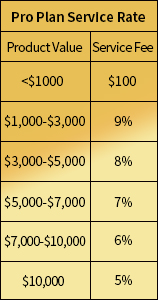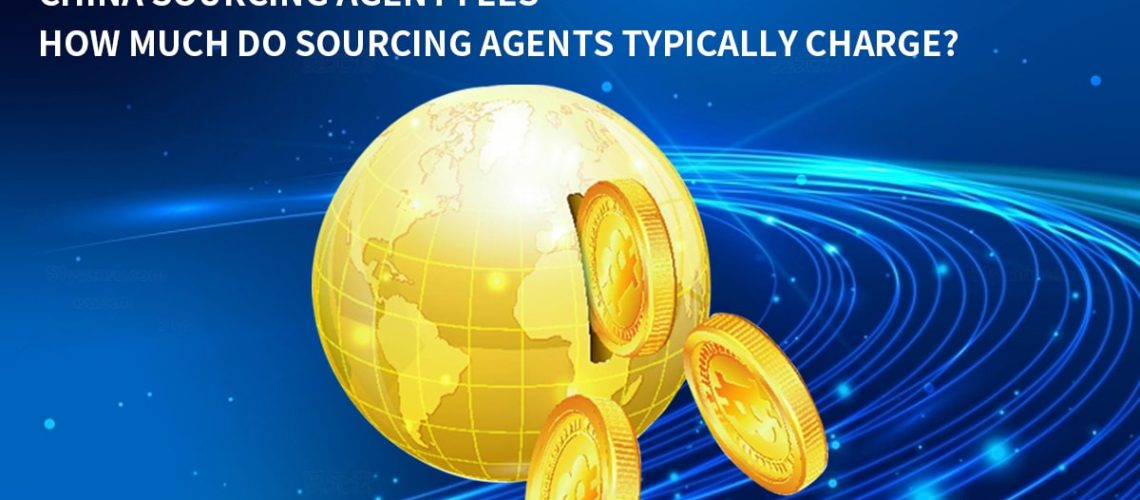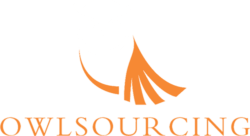Are you ready to import products from China so that you can expand your business? Cooperation with an agent sourcing may be one of the most important steps to simplify the process. On the other hand, one of the most vital considerations to be made before diving into the world of global sourcing is the fees attached to it. This paper will be a broad coverage of the China sourcing agent fees, their structure, and how they can affect the strategic decisions of your business.
Importing goods from China provides us with a new adventure with its share of moments of happiness and trials. It is important to be able to identify the cost structure that applies when a sourcing agent is used. China sourcing fees cover many areas and a proper knowledge of this may help in the making of wise business decisions.
Table of Contents
ToggleChina Sourcing Agents
China Sourcing Agents: Closing The Distance between International Customers and Chinese Factories. Chinese manufacturers can connect with foreign buyers through the help of buying agents.
They play a pivotal role in bridging the gaps, in this regard, in matters like dispute handling, communication, factory inspections, prototyping, sample review, laboratory testing, procurement contract negotiation, order production tracking, quality control, and international logistics. On the other hand, it must be added that the amount, which may differ depending on numerous reasons, represents the price of their services.
Factors Influencing Sourcing Agent Fees
1. Product Complexity
The fact that your product is complex can affect the fees. Complex products may be more demanding during processes such as sourcing, production, and quality control or inspection. Hence, the price might be increased.
For example, there are various communication expenses to consider during a new product development phase like features or packaging details. It entails determining whether such an idea is feasible to be brought to market.
It also involves determining if there’s a need for new mold development and debugging, such as injection molds, blow molds, or stamping molds. Additionally, expenses related to packaging, such as designing and printing new packaging (including packaging paper die-cut molds and plastic blister die-cut molds), revising and verifying new product manuals, exploring and testing alternative materials for practical application, and conducting multiple sample submissions to laboratories for testing in compliance with different regulations, all contribute to the overall cost.
Typically, more complex tasks and projects will require a higher fee for procurement agent services.
2. Order Volume
The quantity of products you intend to import also plays a role. Bulk orders might attract volume discounts but could incur higher logistical expenses.
In most cases, the unit price of procurement tends to decrease as the quantity increases, while small-batch purchases may appear slightly more expensive due to certain fixed costs. For instance, if the operational cost for shipping a container export through a freight forwarder is $1,000, spreading this cost over 100,000 items versus 1,000 items results in significantly different per-unit expenses. Therefore, the quantity of a procurement order is one of the decisive factors determining the pricing offered by Chinese sourcing agents.
3. Supplier Network
Experienced sourcing agents often have a vast network of suppliers. While this can be advantageous, it’s important to note that if you request the procurement of goods in a category that is not the specialty of the China sourcing agent company, it may lead to higher procurement prices.
This is because Chinese procurement agents may also be susceptible to deception by factories when dealing with products they are not familiar with. Therefore, as a client, it is advisable to gain prior knowledge of the procurement agent company’s strengths in specific product categories, enabling you to make more informed choices that align with your interests.
4. Additional Services
Sourcing agents offer supplementary services like factory visits, quality inspections, and sample consolidation. These add-ons can impact the total cost but also enhance the overall process.
As previously mentioned, requirements for laboratory testing, e-commerce image capture, specific inspection criteria, new product mold development, new product packaging design, and the like can all impact the overall complexity and delivery time of an order. In general, if the procurement task is relatively straightforward, the pricing provided by procurement agents is likely to be more cost-effective.
Common Components of Sourcing Agent Fees
1. Commission Fees
The most common structure is a percentage-based commission of the total order value. This incentivizes agents to secure the best deals for clients.
Commonly, sourcing agents charge commissions typically falling within the range of 3% to 10%. These commission rates are often determined based on the annual procurement volume, the complexity of product development, and the length of order delivery cycles.
If the procurement volume is high, sourcing agents will typically charge a lower commission rate. On the other hand, if the procurement quantity is low and the procurement amount is small, it may result in a higher commission rate, especially when there are demanding order delivery requirements.

Another fee structure for sourcing agents can operate based on the client’s target price. For instance, once you have established the target price for a product, you can directly inform your sourcing agent and inquire whether they can meet this target price.
This approach can save you time that would otherwise be spent on repeatedly comparing procurement prices. In this mode, it’s essential to excel in calculating the landed cost of goods.
Product Cost + Transportation Cost + Customs Fees + Risk Expenses + Indirect Costs = Landed Cost.
Here’s an example calculation of the Landed Cost:
Total Landed Cost = $10 (Product Cost) + $1 (Shipping cost per item) + $0.20 (Customs duties) + $2.5 (Insurance) + $0.5 (Processing fees) = $14.2 per item.
2. Logistical Fees
Logistics involve shipping, customs clearance, and warehousing. Agents may include logistical fees in their services, covering the transportation of goods to your doorstep.
Typically, international express, air freight, and sea freight transportation methods come into play. The choice of logistics method is the result of negotiation between the client and the sourcing agent and will be based on factors such as the client’s different time sensitivity, budget constraints, and the unique customs requirements of various regions to make the optimal selection.
3. Quality Control Fees
Ensuring the quality of products is essential. Agents may charge for quality checks and inspections throughout the production cycle.
For instance, certain brands on European and American Amazon marketplaces may require a high percentage of quality inspections for products imported from China, including comprehensive inspections before shipment. This significantly impacts the operational and management costs for sourcing agents. Whether it’s conducting on-site inspections at the factory or performing inspections in their warehouses, it adds to labor costs and the expenses related to identifying defects and replacing faulty items.
Therefore, as a client, it is crucial to openly communicate your product quality requirements to the sourcing agent.
This ensures that both parties place adequate emphasis on quality before production commences, especially concerning product details such as appearance, functionality, packaging, testing, labeling, and any other specific requirements.
4. Sample Costs
Before committing to a large order, you might request product samples. Agents may charge for obtaining, storing, and shipping these samples to you. Some sample fees may be charged at 2-3 times the unit purchase price because the factory may invest more time in producing samples for you.
Transparency in Fee Structures
A reputable sourcing agent should maintain transparency in their fee breakdown. It’s essential to understand how each fee contributes to the overall cost and what services are included.
Maintaining close communication with the sourcing agent is of paramount importance. It facilitates effective collaboration between both parties in managing procurement orders and allows for a focused approach to production details.
Calculating the Total Cost
Case Study: Product A vs. Product B
Let’s compare the sourcing costs of two different products. Product A, being technologically advanced, might incur higher quality control fees. On the other hand, Product B, simpler in design, might have lower overall fees.
Total Cost Calculation for Product A:
- Mold Development Costs: $5,000
- Manufacturer’s Production Costs: $15,000
- Testing Fees: $2,000
- Agent Commission: $1,500
- Logistics Expenses: $1,500
- Tariffs: $1,200
Total Cost = Mold Development Costs + Manufacturer’s Production Costs + Testing Fees + Agent Commission + Logistics Expenses + Tariffs
Total Cost = $5,000 + $15,000 + $2,000 + $1,500 + $1,500 + $1,200
Total Cost = $26,200
Total Cost Calculation for Product B:
- Manufacturer’s Production Costs: $10,000
- Agent Commission: $600
- Logistics Expenses: $1,000
- Tariffs: $800
Total Cost = Manufacturer’s Production Costs + Agent Commission + Logistics Expenses + Tariffs
Total Cost = $10,000 + $600 + $1,000 + $800
Total Cost = $12,400
Benefits of Hiring a Sourcing Agent
While the fees are a consideration, the benefits often outweigh the costs. Sourcing agents mitigate risks, provide market insights, and navigate cultural differences, ensuring a smoother procurement process.
For example, it’s akin to when buying a house, you engage a local real estate agency to provide professional services. They can help you save time and gain a better understanding of the local market conditions, ultimately assisting you in achieving your goals. Similarly, sourcing agents play a vital role in streamlining the procurement process and ensuring that your objectives are met efficiently and effectively.
Some Potential Strategies To Save Costs When Sourcing
1. Consolidation of Shipments
Shipment consolidation will also serve to reduce logistical expenses and transportation optimization.
Having the sourcing agent with practical experience select the best shipping route for the clients that are characterized by individual circumstances including different manufacturers and a variety of production factors is possible.
They also excel in resource integration and supplier management coordination, making this a crucial component of optimizing the Chinese supply chain.
2. Supplier Negotiation
Experienced sourcing agents have negotiation skills which help them to get terms from profitable suppliers. These agents act as middlemen and charge a fee for their services.
3. Quality Assurance Investments
The investment in quality control can lower the cost in the long term through the elimination of defects and returns.
I highly recommend setting up good quality control management systems before the products go out of China. Customers’ bad situation with the flawed items may be turned into a nightmare. It draws attention to the vital aspects of quality control of the source, which aims at avoiding such issues before they even develop.
Avoiding Hidden Costs in Sourcing
To avoid surprises, make certain you have discussed thoroughly all of the possible hidden costs, for instance, product modifications, storage fees and currency conversion fees.
Comparing Sourcing Agents
Gather quotes from several sourcing agents and review their fee structure. Comprehend their historical performance, the list of services, and customer feedback reports.
I highly recommend engaging in video conferences with your sourcing agent to gain a clear understanding of the workflow. This direct communication method allows for effective collaboration and ensures both parties are on the same page, enhancing the efficiency of the procurement process.
Finding the Right Balance Between Cost and Quality
We do not intend to look for the cheapest way but a strategy that permits our business to become more profitable and sustainably succeed.
Read more:
- Benefits of Working with China Sourcing Agents
- The Best Methods to Ship Your Product Directly from China
- What is a Sourcing Agent?
Final Thoughts
For international trade, dealing with China sourcing agent fees is an added part of the equation. Especially as a business owner, grasping and comprehending all the details puts you one step ahead and helps you make the right decision for your business. The partnership with the right sourcing agent and knowing the cost structure leads to a journey that is full of success (importing) and efficiency.
- Check out our Service for Global Importers: Product Sourcing Service in China
- Check out our Sourcing Services Plans: China Sourcing Service Plan
FAQs
1. What is the primary role of a China sourcing agent?
A China sourcing agent acts as a bridge between international buyers and Chinese manufacturers, facilitating communication, logistics, and quality control.
2. How are commission fees usually structured?
Commission fees are often a percentage of the total order value, incentivizing sourcing agents to secure favorable deals.
3. Can I negotiate sourcing agent fees?
Yes, negotiation is possible. Experienced agents may be open to discussing their fee structure based on the services you require.
4. Are there alternatives to using a sourcing agent?
While you can directly communicate with manufacturers, a sourcing agent offers expertise, local knowledge, and risk mitigation.
5. What are some red flags when choosing a sourcing agent?
Beware of agents with unclear fee structures, unverifiable credentials, and excessively low fees that seem too good to be true.


